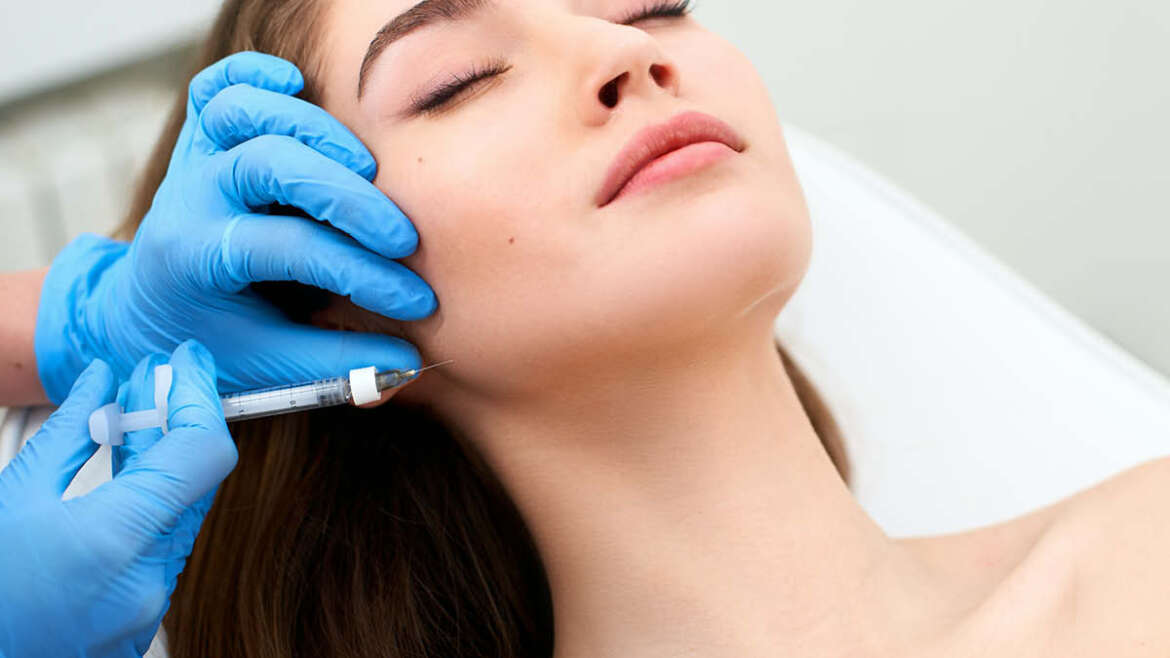Dermal Fillers
In recent years, the popularity of dermal fillers has increased significantly. This non-invasive treatment is a powerful solution to improve the appearance of deep-set lines and wrinkles, add fullness to thin lips, and create more appealing facial contours. This versatile treatment may be recommended on its own or in conjunction with other cosmetic surgery procedures and solutions offered at Plastic & Reconstructive Surgery – a division of U.S. Dermatology Partners. On this page, you can learn the basics of dermal fillers before your visit.
What Are Dermal Fillers?
You may have heard of dermal fillers referred to by one of many popular brand names. However, they are all designed to achieve the same basic objective – add volume. The filler material is injected below the skin, or deeper, to restore volume lost due to wrinkles and scars, plump the lips and cheeks, or reshape facial contours. Each type of dermal filler is specifically formulated to address certain issues. You may request Juvederm or Boletero because you’ve heard of this particular filler, but your plastic surgeon may recommend a different option that will better suit your needs and aesthetic goals. While each brand has its own unique formulation, the main difference between dermal fillers boils down to their ingredients.
There are several main types of dermal fillers:
- Hyaluronic Acid (HA) Fillers – HA is a naturally occurring substance in the body that moisturizes the skin. For many people, this type of filler is more readily accepted by the body, delivering increased fullness while helping skin attract and retain moisture.
- Collagen Fillers – This is another filler derived from naturally occurring ingredients. Collagen is a protein that gives skin its natural elasticity. By utilizing collagen fillers, your cosmetic surgeon can reshape specific areas while introducing a collagen boost to the skin.
- Biostimulatory Fillers – This filler type is made from synthetic ingredients. While naturally derived fillers may be beneficial, this synthetic option allows for longer-lasting results. The results of biostimulatory fillers can last a year or longer before retreatment is needed.
- Polymethyl-Methacrylate Microspheres (PMMA) Fillers – These fillers are often recommended for deeper facial wrinkles, folds, scars, and furrows in skin like those around the nose or caused by acne scarring. PMMA fillers are considered semi-permanent, and the results last up to five years. They both increase fullness immediately and they increase collagen levels for long-term elasticity and fullness.
Benefits of Dermal Filler Treatment
There are many benefits associated with dermal fillers.
Some of the most commonly reported by patients include:
- Restored youthful, smooth appearance
- Fast results
- Minimal downtime
- Increased collagen and elastin production
- Can be combined with other treatments
- Increased confidence
Recovery After Dermal Filler Treatment
One of the best things about treatment with dermal fillers is that it’s a non-invasive option. Most people are able to return to work and other activities within 24 hours with minimal to no downtime. There may be some mild redness, bruising, or swelling immediately following injections, but this typically clears up within 48 hours, although bruising may last up to 2-3 weeks. Discomfort and swelling are manageable with over-the-counter pain relievers. The only restriction is to avoid rigorous exercise for the first few days to allow the body to heal.
Risks Associated with Dermal Fillers
Risks associated with dermal fillers are few, and even the more serious adverse reactions are treatable.
Some of the risks include:
- Hypersensitivity – This is usually short-lived and only present at the injection site.
- Numbness – Loss of sensation at the injection site typically goes away within a week, but it may be longer lasting or permanent in rare cases.
- Infection – This is rare when the procedure is performed by a qualified professional, but if you notice symptoms associated with infection like swelling, redness, pain, fluid buildup, or fever, let your doctor know right away.
- Allergic Response – Signs of allergy to the filler include bumps under the skin at the injection site, skin discoloration, redness, and itching.
I’m Interested in Dermal Fillers
If you’re interested in learning more about dermal fillers or would like to arrange a consultation to explore the benefits of these non-invasive treatments, don’t hesitate to reach out to Plastic & Reconstructive Surgery. Our dedicated team is here to provide you with in-depth information and personalized guidance. We are committed to addressing any additional questions or concerns you may have and helping you make informed decisions about enhancing your facial aesthetics. Your journey to a more youthful and revitalized appearance begins with a simple contact.
FIND A PHYSICIAN NEAR YOU
PHYSICIANS THAT OFFER DERMAL FILLERS

Chris Surek, DO

Daniel Bortnick, MD


